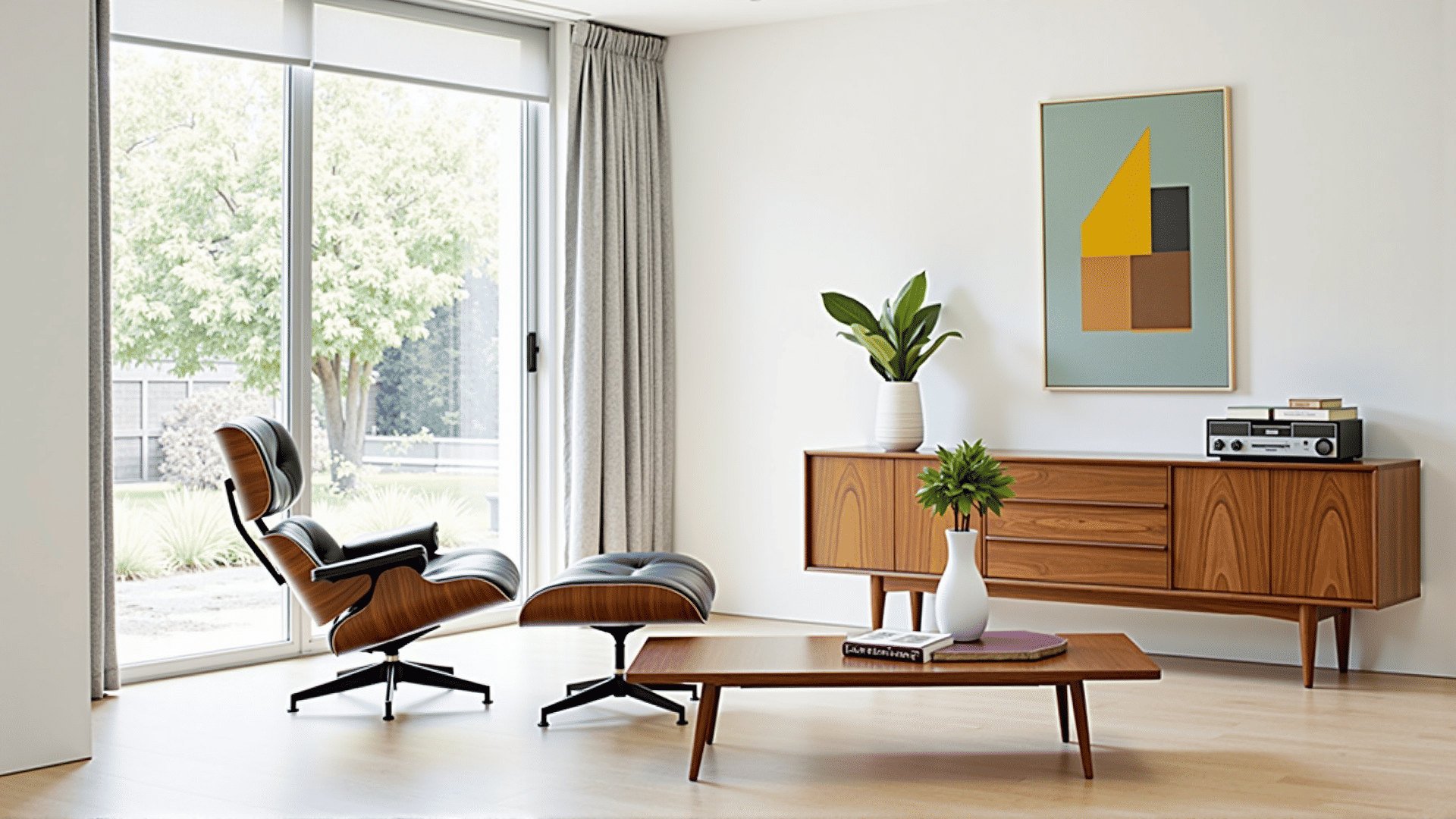Mid-Century Modern design represents a transformational period in the realm of interior aesthetics, marked by its hallmark principles of simplicity, functionality, and a forward-thinking approach to form.
Originating from the mid-20th century, this design movement emerged as a response to the ornate and heavily detailed styles prevalent in the preceding eras. Embodying the optimism post-World War II, mid-century modern is distinguished by its clean lines, minimal ornamentation, and a focus on the efficient use of space. These ideals mirrored the societal aspirations for progress and innovation.
The distinct aesthetic of mid-century modern design is instantly recognizable, with its emphasis on organic and geometric forms, varied textures, and experimental materials. Designers like Charles and Ray Eames, Eero Saarinen, and George Nelson became synonymous with this movement, each contributing iconic pieces that continue to influence design today. Their creations often incorporate bold, sleek shapes and a blend of natural and man-made materials, reflecting the era's fascination with both nature and technology.
Rooted in practicality and simplicity, mid-century modern design avoids superfluous ornamentation, focusing instead on utility and purpose. For instance, the open-plan floor layouts commonly associated with this style aim to create fluid, uncluttered living spaces adaptable to various functions. This adaptability is further emphasized through the thoughtful integration of indoor and outdoor environments, utilizing large windows and open spaces to bring the outside world in.
Color palettes in mid-century modern spaces typically include rich, earthy tones alongside pops of vibrant colors, like mustard, teal, and orange. These choices not only reflect the natural world but also add warmth and dynamism to the sleek, often austere lines of the furniture and décor.
Beyond aesthetics, mid-century modern design holds an enduring appeal due to its versatility. It seamlessly blends with other styles, from traditional to contemporary, making it a favorite for those looking to create a harmonious and balanced home environment. Its timeless qualities allow it to adapt to modern needs while maintaining its distinct character and charm.
The legacy of mid-century modern design is evident in its continued popularity and influence. It challenges us to consider the form and function of everyday objects, encouraging a thoughtful approach to how we curate our living spaces. This revolution in design not only changed the way interiors look but also transformed the way we engage with the spaces around us, leaving an indelible mark on the world of design.
